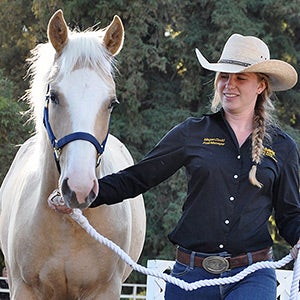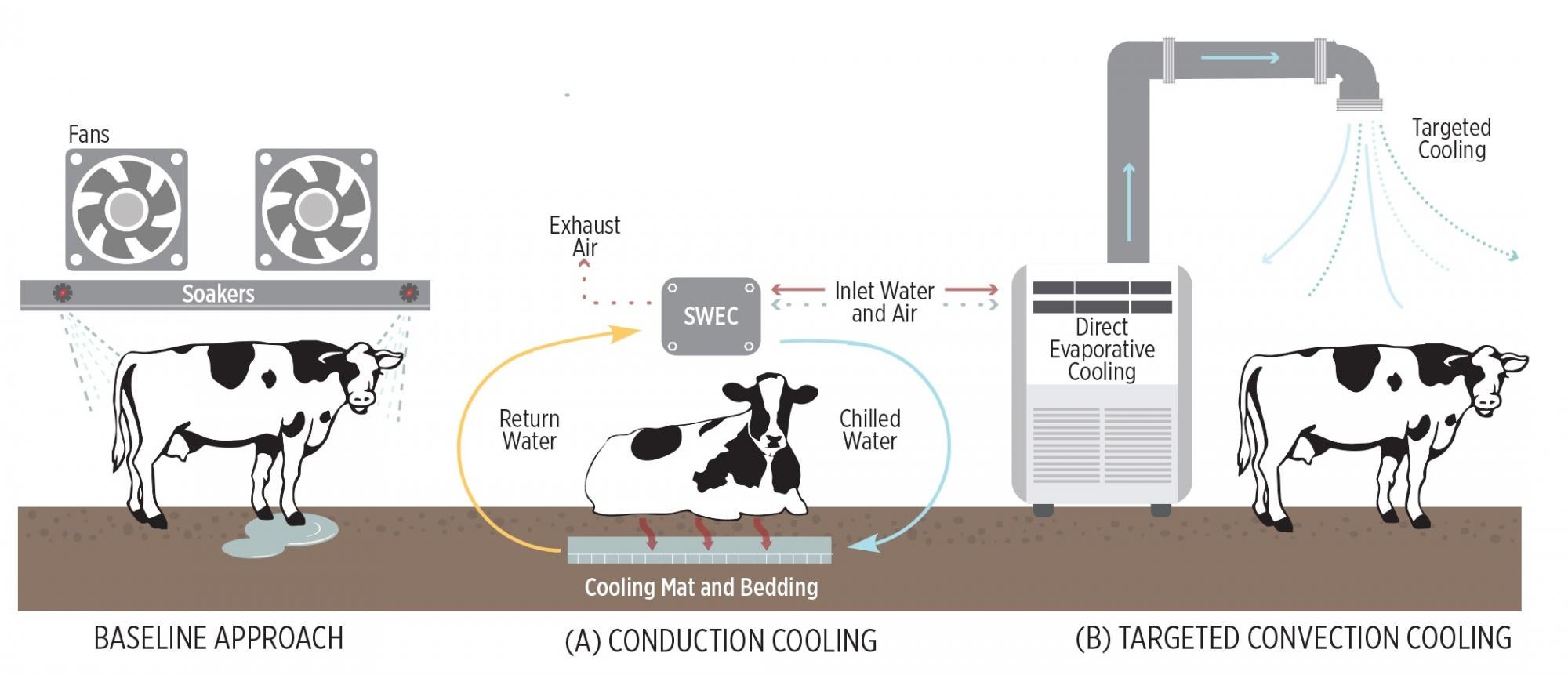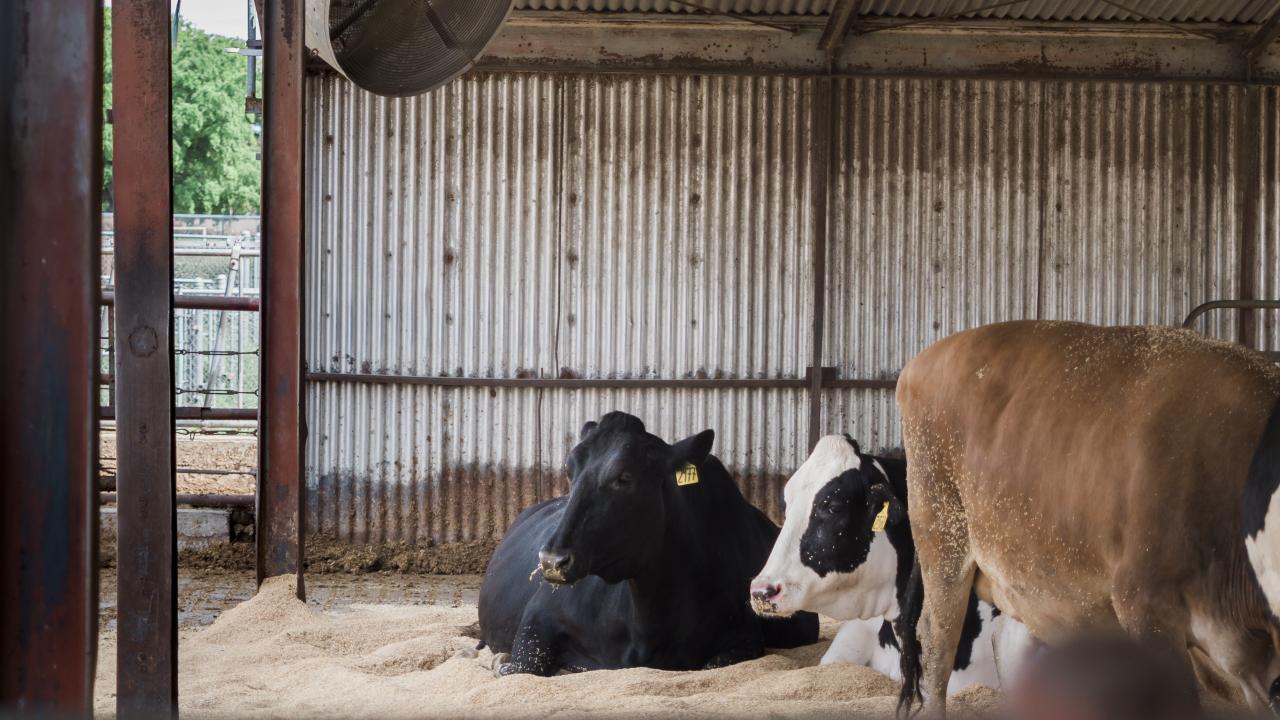Innovative cooling technologies tested on dairy cows at the University of California, Davis, are addressing the long-standing challenge of keeping dairy cows cool in heat-stressed California.
Standard livestock cooling methods, such as fans and sprinkling cows with water, require significant amounts of electricity and water. The new technologies, being tested at UC Davis by the Western Cooling Efficiency Center and the Department of Animal Science, are designed to reduce water by up to 86 percent and electricity by up to 38 percent over conventional methods.
Milk production and heat stress
Milk is the most valued agricultural commodity in California, with $9.4 billion in retail sales in 2014. Roughly one in every five dairy cows in the nation lives in California. In addition to disturbing the cow, heat stress is a major cause of diminished milk production in dairy cows, with annual losses directly related to heat stress exceeding $800 million.
“The process of rumination, where cows ferment their food, produces a lot of heat, as does milk production itself,” said Cassandra Tucker, a professor in the Department of Animal Science who focuses on dairy cattle welfare. “When the outside temperatures also rise, it’s a challenge for the animal in how she’s going to try to keep cool. This project is trying to reduce the energy and water use associated with that to help both the cows and the dairy producers.”

Consider the Animal Science Major
Interested in a career studying topics like this? The animal science major at UC Davis is great for professional careers in research, veterinary medicine, human medicine, animal care and the food industry. Students receive a broad education about livestock, working animals, pets and fish, while also studying the core sciences. Read more on our majors blog.
How it works
The technologies involve two approaches. The first is conduction cooling, where the bedding area is cooled using heat exchange mats placed where cows lie down. To reduce energy consumption, water flowing through the mats is cooled through a novel evaporative chiller called a Sub-Wet Bulb Evaporative Chiller.
The second approach is targeted convection cooling, which uses fabric ducting to direct cool air onto the cows while they lie down and when they eat. The air is cooled using a high-efficiency direct evaporative cooler.

“This is an exciting research opportunity for UC Davis to combine our expertise in engineering with our expertise in animal science,” said Theresa Pistochini, senior engineer at the Western Cooling Efficiency Center. “There is significant potential to apply existing technologies in a novel way to reduce both energy and water used to cool dairy cows. Through this project we aim to design, test and demonstrate an efficient alternative.”
The project is part of a four-year, $1 million grant from the California Energy Commission to help improve water and energy efficiency in California’s dairy industry. The data being collected now will help determine which technology the team should use to pilot at a commercial dairy in a future phase of the project.
Media Resources
Kat Kerlin, UC Davis News and Media Relations, 530-750-9195, kekerlin@ucdavis.edu
Paul Fortunato, UC Davis Western Cooling Efficiency Center, 530-752-0280, pfortunato@ucdavis.edu
